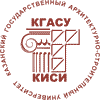About the authors
| First name, Middle name, Last name, Scientific degree, Scientific rank, Current position. Full and brief name of the organization, The organization address. | Oleg N. Zaitsev, doctor of technical sciences, professor, Southwestern State University, Kursk, Russian Federation Email: This e-mail address is being protected from spambots. You need JavaScript enabled to view it , ORCID: 0000-0001-9084-9355 Sergey V. Chuykin, candidate of technical sciences, associate professor, Voronezh State Technical University, Voronezh, Russian Federation Email: This e-mail address is being protected from spambots. You need JavaScript enabled to view it , ORCID: 0000-0001-6040-323X Vitaly V. Volkov, candidate of physical-mathematical sciences, associate professor, Voronezh State Technical University, Voronezh, Russian Federation Email: This e-mail address is being protected from spambots. You need JavaScript enabled to view it , ORCID: 0000-0003-1114-984X Alexander S. Chesnokov, candidate of technical sciences, associate professor, Voronezh State Technical University, Voronezh, Russian Federation Email: This e-mail address is being protected from spambots. You need JavaScript enabled to view it , ORCID: 0009-0006-1537-3901 |
| Title of the article | Modeling of heat and mass transfer processes of ventilation in indoor ice rinks |
| Abstract. | Indoor ice rinks and arenas are among the most energy-intensive types of public facilities, which is associated with the need to ensure characteristic microclimatic and technological conditions indoors. Existing calculation methods often do not meet modern requirements for accuracy and automation as a tool for solving optimization problems in the design, construction and operation of energy-consuming systems. The purpose of the work is to study the characteristic features of heat and mass transfer processes of ventilation of indoor ice rinks with possible phase transformations of water in the room for the subsequent selection of rational technical solutions and modes of operation of ventilation systems based on mathematical modeling. The objectives of the study are to develop and verify a model of heat and mass transfer processes of ventilation in an indoor ice rink, capable of taking into account the phase transformations of water in moist air and on construction and technological surfaces. Results. A thermographic examination of the internal surfaces of the existing indoor ice rink was carried out to identify characteristic thermal zones in the room. The distribution of air temperature and humidity over the height of the ice field zone was obtained by sampling using a measuring tripod with thermohygrometers. The model of heat and mass transfer processes in an indoor skating rink has been developed and verified. Conclusions. It is revealed that the circulation in the central part of the room has a closed character, and is provided due to the formed difference in the density of the internal air, accompanied by the ejecting effect of supply jets. The presence of temperature and humidity gradients of indoor air characteristic of indoor ice rinks can be used to regulate the thermodynamic parameters of the supply air during its treatment in the ventilation system. |
| Keywords. | indoor heat and mass transfer, air exchange, numerical modeling, ventilation of ice rinks, temperature and humidity distribution |
| For citations: | Zaitsev O.N., Chuykin S.V., Volkov V.V., Chesnokov A.S. Modeling of heat and mass transfer processes of ventilation in indoor ice rinks // News of KSUAE, 2025, № 2(72), p. 21-34, DOI: 10.48612/NewsKSUAE/72.2, EDN: AONPKB |
















